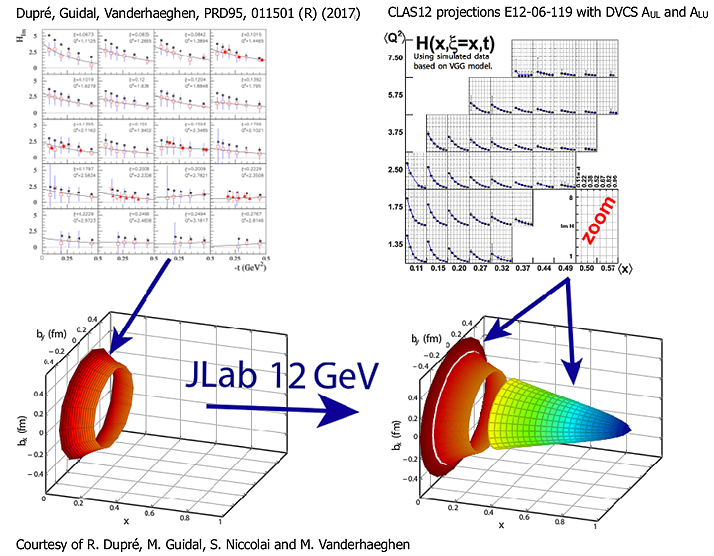
INSTITUTE FOR NUCLEAR THEORY
News
Home | Contact | Search | News archive | Site Map

|
INSTITUTE FOR NUCLEAR THEORY News
Home | Contact | Search | News archive | Site Map |
|||||
|
Spatial and Momentum Tomography of Hadrons and Nuclei August 28 - September 29, 2017 Reported by I. Cloët, K. Hafidi, Z-E. Meziani, B. Pasquini Date posted November 3, 2017 |

The last decade or so has seen the development of a comprehensive approach to the description of hadron and nuclear
structure. This framework encodes our knowledge of hadrons and nuclei in the Wigner distributions of the fundamental
constituents − quarks and gluons − whose interactions are governed by quantum chromodynamics (QCD). A Wigner
distribution is a quantum mechanical concept analogous to the classical notion of a phase space distribution, and allows for
a quark and gluon tomography of hadrons and nuclei. Wigner distributions provide a new mathematical structure within
which some of the most important questions in hadron physics can be framed and addressed, for example: how is mass and
energy distributed inside hadrons and nuclei; what are the effective degrees of freedom and their important correlations;
how are orbital angular momentum and spin distributed among the quarks and gluons; and ultimately insight into the
mechanisms that generate the proton mass and color confinement.
A key outcome of the program will be a white paper that reviews the topics above, and thereby provides guidance for the
Jefferson Lab tomography program, and a road map towards a future imaging program at an electron-ion collider.
|